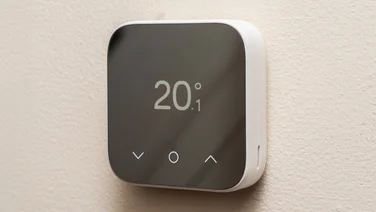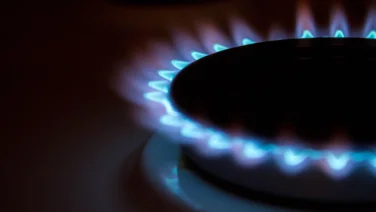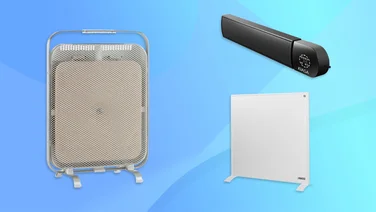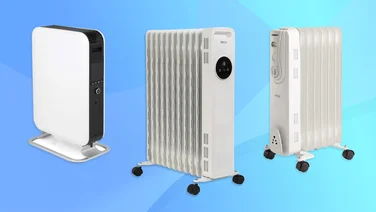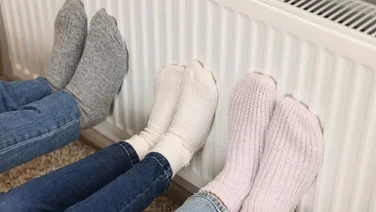To help us provide you with free impartial advice, we may earn a commission if you buy through links on our site. Learn more

Whether you heat your home using gas, oil filled radiators or electricity, you can’t have failed to notice that it’s costing more this year than last. The only way you’ll have escaped rising prices is if you’re on a fixed tariff, and they don’t last forever. So, unless you can negotiate a similarly favourable rate when it comes to an end – which seems unlikely – you’ll soon have to dig deeper if you want to stay warm.
What are the best ways to keep your house warm, without bumping up the heating by a degree or two? The most effective investments would be double glazing and cavity wall insulation, but these are expensive solutions that may not suit everybody – not every home has cavity walls and most newer houses will already have double glazing – and are best negotiated directly with the supplier, who can also advise on the best product for your home and lifestyle. Instead, we’re going to focus on more affordable and easier-to-implement solutions that don’t require the services of a specialist or professional installer.
READ NEXT: The best fan heaters
1. Optimise your heating
Assuming you’re not going to switch off the heating altogether, it’s important to make sure you’re feeling the benefit of every penny you spend.
Bleed your radiators
Start by bleeding your radiators to make sure the flow of hot water isn’t being impeded by air pockets in the pipework. If the top of a radiator stays cold when the rest of it heats up, or if the whole radiator fails to heat up even though any attached thermostatic valve is fully open, then it needs bleeding.
If you’ve never bled a radiator before, look for a valve at one end, close to the top of the pipework, which has either a slot for a flathead screwdriver, or a fixing for a dedicated key. Slowly turn the valve anti-clockwise until you start to hear the hissing sound of air escaping, and leave it in that position until the hissing stops and the first drops of water appear. Always do this when the heating is off and the radiators are cold to avoid scalding. And be careful to hold a cloth below the valve to catch any water that may leak out and stain your walls or carpets. The appearance of the first drop of water will often be preceded by a slight gurgling sound, which is your cue to close the valve. Then switch your heating on again to check whether the radiator gets hot.

If your radiators aren’t heating up evenly – or at all – they may need bleeding.
Uncover your radiators
Once your radiators are working properly, you need to make sure the heat they generate can circulate freely around the room. Avoid the temptation to hang towels and wet clothes on, or directly in front of, the radiator as these will trap the heat. And move any large pieces of furniture – like settees and sideboards – away from the radiator or they will feel the full benefit of its heat and you won’t.

This settee is blocking much of the heat from the radiator behind it.
Consider fitting a radiator fan. This device sits at the top of the pipework and blows the heat forwards into the room, rather than allowing it to rise, heating the top of the room before it can reach the lower area where you’ll be sitting. These needn’t be expensive to run – the four-fan Radfan Classic Medium only consumes 4W, while it claims to save many times that, and is designed for self-installation. Alternatively, simply fit a shallow shelf above the radiator, which will stop the hot air from heading straight up the wall.
Similarly, if you have a wood burning stove, a passive stove fan – driven by the rising heat from the burner itself – can also be used to push heat forwards into the room.
Reflect the heat
Don’t forget that radiators send heat in all directions, including back towards the walls on which they’re mounted. Counter this by fitting dedicated radiator heat reflector foil, which can be cut to fit the different radiator sizes and shapes in your home. If you can’t afford a dedicated reflector, then you can at least try the same trick with clean kitchen foil. While it may not be as effective as a multi-layer bubble-filled product, it should help to redirect some of the heat to where it’s most useful.
If you have a ceiling fan that you use to keep cool in the summer, check whether it has a reverse function, which can be used to send air down into the room, rather than lifting it up. As heat naturally rises, this will help to push it back into the usable space.

Setting a ceiling fan to push air down into the room can help reduce the amount of heat gathering above your head.
Service your boiler
Finally, if you’ve not had your boiler serviced in the last couple of years, now would be a good time to get in touch with an engineer to check it for efficiency and emissions. If it’s not in optimum condition, it may be burning more gas or electricity than it needs.
You can also ask your engineer about the general state of your overall heating system, and whether it would benefit from the use of an internal cleaning product.
READ NEXT: The best wood burners
2. Be window smart
Keep your curtains open during daylight hours – particularly on the sunny side of your house. This will maximise the amount of heat you can gather through solar capture and, by closing them shortly before sunset, you can help to reduce the amount of heat you subsequently lose. Of course, you can see when the sun rises and sets yourself, or you could use a site like Time and Date to find the official timings.
If you have flimsy curtains that you don’t want to replace, invest in some lining to increase the efficiency. It isn’t expensive and, if you know how to use a needle and thread, you can fit it yourself.

Leave curtains open in sunny weather but close them before it gets dark.
Clean and insulate your windows
Wash your windows at the start of the season to maximise the amount of sunlight that can pass through into your home. Conversely, if you have a single layer window that’s rarely used – perhaps in a pantry, a downstairs loo, or a room you rarely enter – consider sticking bubble wrap directly to the frame using tape, or another easily removable option, so you can take it down again in spring.
Although bubble wrap is unlikely to do much to improve the performance of a professionally fitted, efficient, double- or triple-glazed unit, it can make a significant difference to otherwise chilly windows.
For more visible windows, consider using a window insulation kit instead. These can be cut to size and consist of a film that’s attached to the frame using tape, then shrunk using the heat from a hair dryer to become tight.
Detect draughts and plug gaps
Check for gaps around windows and doors as these can allow cold air in and hot air out. When you find any, fit expanding draught excluder tape around where the window (or door) and frame meet. This is bought on a roll and cut to size and, because it’s pliable, it can expand to neatly plug gaps of different widths.
If the gap beneath your door is too large to be plugged by draught excluding tape, use a dedicated draught stopper, which fixes to one side of the door and flexes as it passes over the floor or any ridges.
3. Insulate the extremities
“A quarter of heat is lost through the roof in an uninsulated home,” says the Energy Saving Trust. “Insulating your loft, attic or flat roof is an effective way to reduce heat loss and reduce your heating bills.” And even better yet, “installed correctly, loft insulation should pay for itself many times over in its 40-year lifetime.”
Insulate your loft
As heat rises, ensuring you have adequate loft insulation is one of the most important steps you can take towards keeping your house warm. It’s worth looking at, even if you already have some insulation in the loft, as it might not be enough. Wickes’ helpful guide to insulating a loft advises measuring existing insulation: “Ideally, this base layer needs to have a depth of 100mm and come up to no more than 25mm above or below the joist. A second layer of at least 170mm can then be laid over the top of the joists to get you to the recommended building regulations guide of 270-300mm”.
Also, measure the spaces you want to fill so you can buy the most appropriate roll size. Although insulation can be cut to fit, it’s much less work and there will be less waste if you choose appropriate lengths at the outset.

Ensuring your loft is properly insulated can help keep your house warm.
Insulate your floor
Old wooden floors can warp over time, allowing gaps to form between the boards. These can allow the free passage of air, so either cold air can get in, or warm air can get out. Use a wood sealant to fill gaps or, if you’re on the cusp of laying a new floor, make sure you first put down an insulating layer on top of which you can place the new boards.
If you’re planning to replace your carpet in the near future, fit a good quality underlay at the same time. Like duvets, underlays can have tog ratings that gauge how effective they are at retaining heat. In our review of the best carpet underlay for 2022, “we recommend a tog rating of around 2.5 as a minimum if you don’t want to end up with cold feet. However, if you have underfloor heating, you should actually opt for a low tog, around 1, because you need the heat to come through the carpet”.
But, if you’re stuck with the floor you have, and can’t carpet it, try to find a rug you like, as this will at least help with any draughts coming up through the boards.
READ NEXT: The best electric radiator
4. Let heat circulate… but keep it in
Finally, make use of the heat you’ve already generated by leaving the oven door open as it cools. But make sure it’s switched off first, and that it won’t pose a fire risk or a danger to children or pets. This will allow the heat you’ve paid for to be recycled, warming up the kitchen and beyond.

Allowing your oven to cool down with the door open will release heat into the surrounding air.
Don’t let it disappear up your chimney though, if you have one. A chimney isn’t much different to a permanently open window – it’s just easier to forget about as the opening isn’t so obvious. Worse, a chimney can be designed specifically to draw air up and out of your house. So, when it’s not in use, block it with a draught excluder of appropriate size, or an inflatable chimney balloon. Needless to say, don’t use your fire with this type of device in place.

If you have an open chimney, it may be leaking a lot of warm air.


